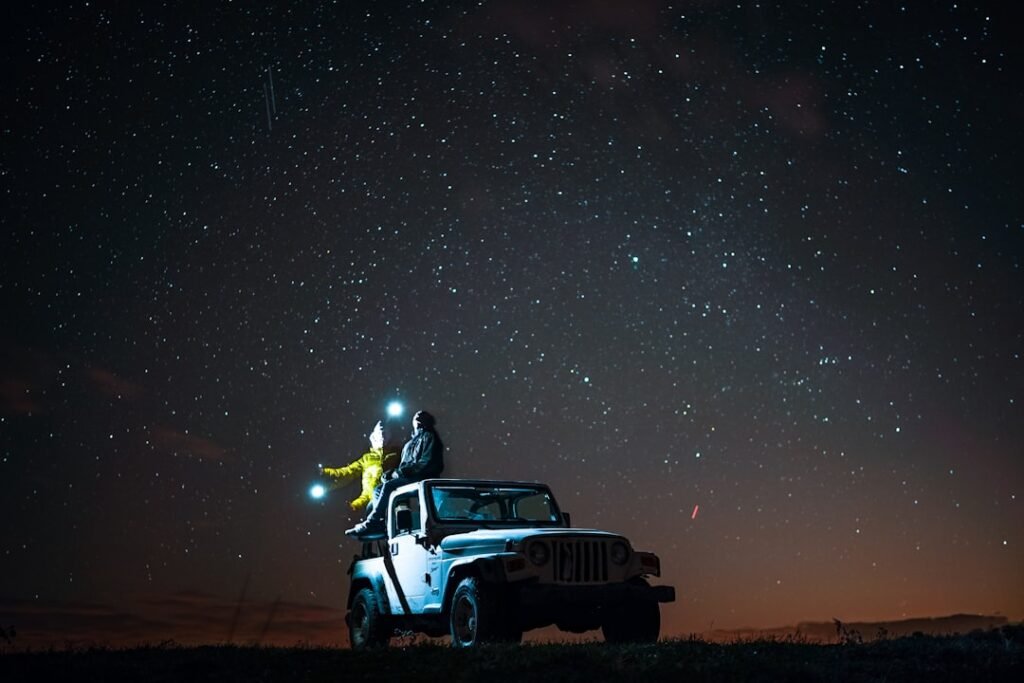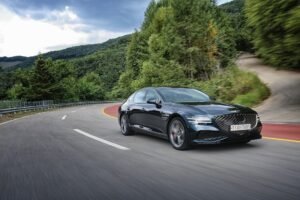Mobile Astronomy: Chasing August Shooting Stars with Your Car

There’s something undeniably magical about the intersection of technology and celestial wonder. As August graces us with the spectacular Perseid meteor shower, car enthusiasts and stargazing romantics alike find themselves drawn to the open road, seeking the perfect vantage point where artificial lights fade and the cosmos reveals its secrets. Your vehicle becomes more than just transportation—it transforms into a portal to the universe.
The romance of astronomical road trips lies not just in the destination, but in the journey itself. Every mile traveled in pursuit of darker skies, every careful calculation of fuel consumption for remote locations, and every moment spent beneath a canopy of stars creates memories that intertwine our love for driving with our fascination for the infinite above.
The Science Behind the Perseid Spectacular
The Perseid meteor shower, peaking annually in mid-August, occurs when Earth passes through the debris trail left by Comet Swift-Tuttle. As these cosmic particles—most no larger than grains of sand—enter our atmosphere at speeds of up to 37 miles per second, they create brilliant streaks of light that have captivated humanity for millennia.
From a scientific perspective, the optimal viewing conditions require specific environmental factors: minimal light pollution, clear atmospheric conditions, and positioning during the shower’s radiant point in the constellation Perseus. This is where your automotive adventure begins—finding locations that satisfy these celestial requirements often means venturing far from urban centers.
Understanding Radiant Points and Viewing Angles
The meteors appear to radiate from the constellation Perseus, which rises in the northeast after 10 PM in August. However, meteors can appear anywhere in the sky, making it essential to find locations with wide, unobstructed horizons. Your car serves as the perfect mobile observatory, allowing you to scout multiple locations and find the ideal viewing spot.
Planning Your Astronomical Road Trip
Successful meteor hunting requires meticulous planning that combines astronomical knowledge with practical automotive considerations. The romance of spontaneous stargazing must be balanced with the science of efficient travel and resource management.
Route Planning for Dark Sky Destinations
Begin by researching certified Dark Sky Parks and remote locations within driving distance. Consider factors such as:
- Distance from light pollution sources (ideally 100+ miles from major cities)
- Elevation advantages for clearer atmospheric conditions
- Road accessibility and safety for nighttime driving
- Weather patterns and cloud cover predictions
- Fuel station availability along rural routes
The key is finding the sweet spot between astronomical excellence and practical accessibility. Your vehicle’s range, fuel efficiency, and the availability of charging stations (for electric vehicles) all factor into this celestial equation.
Timing Your Departure for Maximum Impact
The Perseids are most active between midnight and dawn, with peak activity typically occurring around 2 AM. Plan your departure to arrive at your chosen location by 11 PM, allowing time for your eyes to adjust to the darkness—a process that takes approximately 30 minutes for optimal night vision.
Essential Equipment for Mobile Stargazing
Your car serves as both transportation and base camp for astronomical adventures. The trunk becomes a mobile observatory storage unit, while the vehicle itself provides shelter and comfort during long viewing sessions.
Creating the Perfect Mobile Observatory
Transform your vehicle into a stargazing command center with these essentials:
- Red-filtered flashlights: Preserve night vision while navigating equipment
- Portable chairs or blankets: Comfort for extended viewing sessions
- Star charts and astronomy apps: Navigate the night sky with scientific precision
- Camera equipment: Document your celestial discoveries
- Warm clothing and refreshments: August nights can be surprisingly cool in rural areas
- Emergency supplies: First aid kit, extra batteries, emergency contact information
Documenting Your Celestial Journey
Every astronomical road trip tells a story—the miles traveled in pursuit of wonder, the fuel consumed chasing shooting stars, and the memories created under infinite skies. Download Magica Mileage Tracker to transform these romantic adventures into detailed records of your automotive and astronomical pursuits.
The app’s comprehensive tracking capabilities allow you to:
- Record precise mileage for each stargazing expedition
- Monitor fuel consumption for remote location trips
- Track charging sessions for electric vehicles during extended journeys
- Document trip purposes (astronomical observation) for potential tax benefits
- Analyze driving patterns and efficiency for optimal route planning
Creating a Digital Astronomical Logbook
Beyond basic mileage tracking, use Magica’s detailed reporting features to maintain a comprehensive record of your celestial adventures. Document which locations provided the best viewing conditions, correlate fuel efficiency with route choices, and plan future expeditions based on historical data.
Safety Considerations for Nighttime Astronomical Driving
The romance of chasing shooting stars must never compromise safety. Nighttime driving to remote locations requires additional precautions and heightened awareness.
Pre-Trip Vehicle Inspection
Before embarking on your celestial journey, conduct a thorough vehicle inspection:
- Verify all lights (headlights, taillights, hazard lights) are functioning properly
- Check tire pressure and tread depth for safe rural road navigation
- Ensure adequate fuel or battery charge for round-trip travel plus emergency reserves
- Test communication devices and GPS navigation systems
Navigation and Communication
Remote stargazing locations often have limited cell coverage. Download offline maps, inform others of your planned route and expected return time, and carry emergency communication devices when venturing into particularly isolated areas.
Maximizing Your Perseid Viewing Experience
The scientific understanding of meteor shower mechanics, combined with romantic appreciation for celestial beauty, creates the perfect framework for memorable astronomical adventures.
Optimal Viewing Techniques
Position yourself with Perseus in the northeast, but don’t limit your gaze to that area alone. Meteors can appear anywhere in the sky, and peripheral vision often catches the most spectacular displays. Lie back against your car or on blankets, allowing your eyes to take in the entire sky.
The most romantic moments often occur between meteors—those quiet intervals when you’re simply existing beneath the cosmic dance, your faithful vehicle nearby as a reminder of the journey that brought you to this perfect intersection of earth and sky.
Building Your Astronomical Travel Portfolio
Each August meteor hunt becomes part of a larger astronomical travel narrative. Use Magica Mileage Tracker to build a comprehensive database of your celestial expeditions, analyzing which routes provide the best efficiency, which locations offer the most spectacular views, and how your automotive choices impact your stargazing adventures.
Consider tracking:
- Miles per meteor observed (a romantic way to quantify celestial efficiency)
- Fuel costs associated with astronomical pursuits
- Optimal departure times for various viewing locations
- Seasonal variations in route conditions and accessibility
The Future of Mobile Astronomy
As technology advances, the intersection of automotive capability and astronomical passion continues to evolve. Electric vehicles offer silent operation ideal for peaceful stargazing, while advanced navigation systems help identify optimal viewing locations based on real-time light pollution data.
Your dedication to documenting these journeys with precision—tracking every mile, every charge, every moment spent in pursuit of cosmic wonder—creates a beautiful fusion of scientific methodology and romantic adventure. The data you collect today becomes the foundation for even more spectacular astronomical expeditions tomorrow.
This August, as the Perseids paint brilliant streaks across the night sky, let your car carry you beyond the boundaries of light pollution into realms where science and romance converge beneath the infinite cathedral of stars. And let Magica ensure that every mile of your celestial journey is captured, analyzed, and preserved as part of your ongoing love affair with both the road and the cosmos above.


